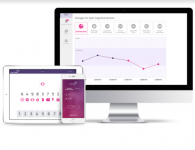
Organizations that hesitate to commit to a total migration to the public cloud model use a combination — or hybrid — of private-cloud-inspired and public cloud styles of computing. That is why, over the past three years, Gartner client requests to discuss hybrid cloud have grown 15%.
“Cloud computing promises that customers will gain advantages from several key propositions, for example by shifting the responsibility and work of running hardware and software infrastructure to cloud providers, leveraging the economics of cloud elasticity, benefiting from the pace of innovation in sync with public cloud providers, and more,” says David Smith, Distinguished VP Analyst, Gartner.
The next generation of cloud computing, retains the advantages of cloud computing while extending the range and use cases for cloud
Yet, hybrid cloud breaks these very value propositions: One part of a hybrid cloud is architected, owned, controlled and operated by the customer and the other by the public cloud provider. The customer retains responsibility for their part of the operation but cannot leverage the capabilities (such as the skills, innovation pace, investments and techniques) of the public cloud provider.
[swg_ad]
Newer generations of packaged hybrid cloud offerings can help reduce the impact of these shortcomings. Distributed cloud, the next generation of cloud computing, retains the advantages of cloud computing while extending the range and use cases for cloud. CIOs can use distributed cloud models to target location-dependent cloud use cases that will be required in the future.
Read more: 4 Trends Impacting Cloud Adoption in 2020
What is distributed cloud?
Distributed cloud computing is the first cloud model that incorporates physical location of cloud-delivered services as part of its definition. Historically, location has not been relevant to cloud computing definitions. In fact, location has been explicitly abstracted away from the service, which inspired the term “cloud computing” in the first place.
Distributed cloud has three origins: Public cloud, hybrid cloud and edge computing. Public cloud providers have supported multiple zones and regions for many years. With packaged hybrid offerings, public cloud services (often including necessary hardware and software) can now be distributed to different physical locations, for instance, the edge.
By 2024, most cloud service platforms will provide at least some distributed cloud services that execute at the point of need
However, ownership, operation, governance, updates and evolution of the services remain the responsibility of the originating public cloud provider. This is a significant shift from the virtually centralized model of most public cloud services and the model associated with the general cloud concept. It will lead to a new era in cloud computing.
Some might ask if distributed cloud is simply a case of edge computing, and the answer is both yes and no. All instances of distributed cloud are also instances of edge computing. But not all instances of edge computing are distributed cloud. This is because many uses of edge involve a public cloud provider that manages the evolution and ongoing control of the resulting environment.
Read more: Top 10 Cloud Myths
The value of distributed cloud computing
Cloud services from public cloud providers become “distributed” out to specific and varied physical locations. Operations being physically closer to those who need the capabilities enable low-latency compute. This also ensures a consistent control plane to administer the cloud infrastructure from public to private cloud and extend consistently across both environments. Taken together, these items can deliver major improvements in performance due to the elimination of latency issues, as well as reduce the risk of global network-related outages or control plane inefficiencies.
Distributed cloud will evolve in two distinct phases. Phase One will consist of like-for-like hybrid
Distributed cloud creates strategically placed substations of cloud compute, storage and networking that can act as shared cloud pseudoavailability zones. Gartner uses the term “substations” to evoke the image of subsidiary stations, for instance branch post offices, where people gather to use services.
Because distributed cloud substations are the responsibility of the originating public cloud provider, the key cloud value propositions of productivity, innovation and support remain intact. In fact, by 2024, most cloud service platforms will provide at least some distributed cloud services that execute at the point of need.
Other specific advantages of distributed cloud potentially include:
- Increased compliance with regulatory requirements that data must be in a specific customer location
- Reduced network failure risk because the cloud services can reside in local or semilocal subnets, allowing them to operate intermittently untethered
- A dramatic increase in the number and availability of locations where cloud services can be hosted or from which they can be consumed (compute zones)
What’s next for distributed cloud?
In practical terms, distributed cloud will evolve in two distinct phases. Phase One will consist of like-for-like hybrid, where enterprise customers will buy cloud substations to mimic the promise of hybrid cloud and avoid latency-based problems.
These customers will not initially embrace the idea of opening their substations to near neighbors, whether geographical or industry-based, and will keep the substation on their premises to themselves. This will have the effect of enabling true hybrid cloud by having public cloud providers take responsibility for everything.
Next-generation cloud will work based on an assumption that cloud substations are everywhere — much like Wi-Fi hot spots
Phase Two, or next-gen cloud, will consist of utilities, universities, city governments and telcos, among others, buying cloud substations and opening them for use by near neighbors. This will begin to establish the idea that distributed cloud represents the foundation of the next generation of cloud computing. This will also reflect the need for the continuum of distributed cloud. Next-generation cloud will work based on an assumption that cloud substations are everywhere — much like Wi-Fi hot spots.
“In both phases, location becomes more transparent again,” says Smith. “They allow customers to specify to a provider, ‘I need X to comply with policies Y and latencies Z,’ and then let the provider configure automatically and transparently. This could potentially represent future phases as well.”
Distributed cloud is not without its challenges
Within the distributed cloud model, some questions must be addressed before the model can be widely adopted. For example:
- How much of the public cloud capabilities will be available on the distributed cloud substation? While this is not definitional to distributed cloud, it is a factor in deciding what flavor of distributed cloud will be necessary — fully distributed or partially distributed.
- What custom scenarios for distributed cloud substations will emerge?
- If distributed cloud substations are opened to near-neighbor companies, who pays for the increased bandwidth necessary for effective operation and how will it be paid?
- How will revenue models play out for sharing substations across multiple companies? For example, do near-neighbor users of a substation pay the originating cloud provider or the enterprise that originally requested the substation be installed?
- Must a distributed cloud substation always be connected, or can it operate with variable connectivity?
Considerations for CIOs
In the eyes of the CIO, the distributed cloud concept will guide the roadmap for cloud evolution. It will specifically benefit CIOs seeking new opportunities to reach customers in dispersed environments and those who need location-specific services with reduced latency. Using Phase One like-for-like hybrids without sacrificing cloud value propositions will enable real hybrid cloud computing. Thus, distributed cloud not only ushers in a next generation of cloud in Phase Two, but it also helps build a firmer foundation for hybrid as it exists today.
![]()
The post The CIO’s Guide to Distributed Cloud appeared first on Smarter With Gartner.
read more at https://blogs.gartner.com/smarterwithgartner by Katie Costello
Business









